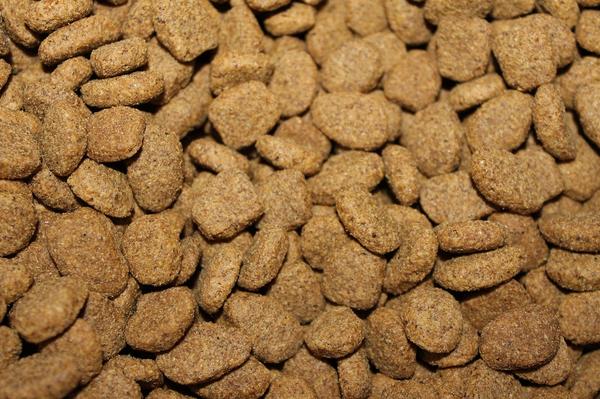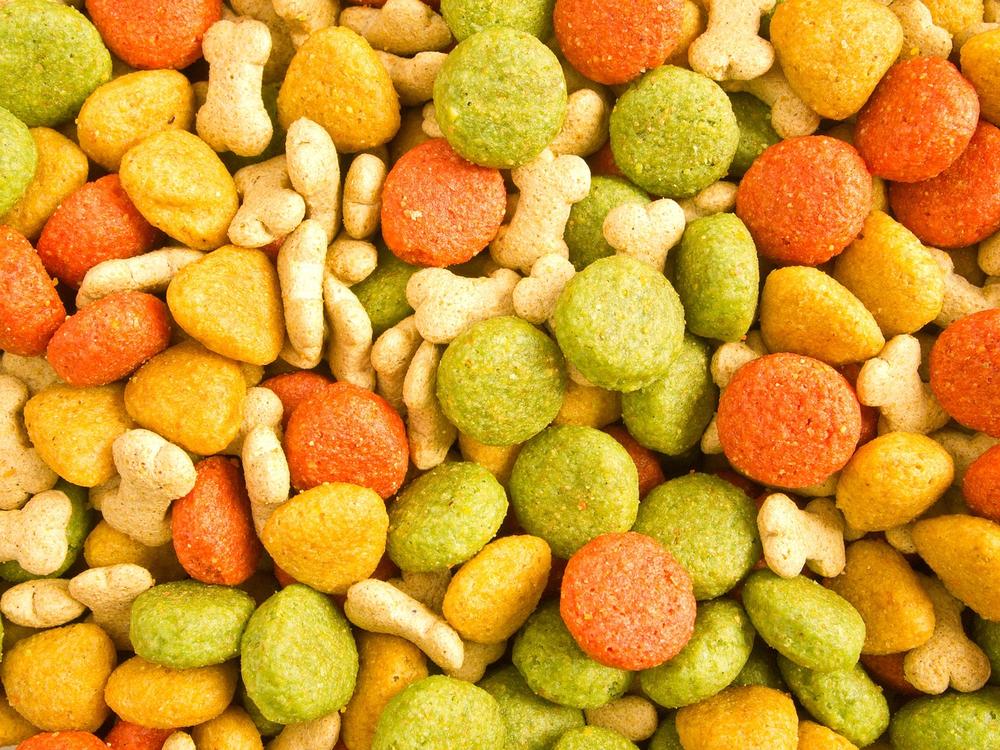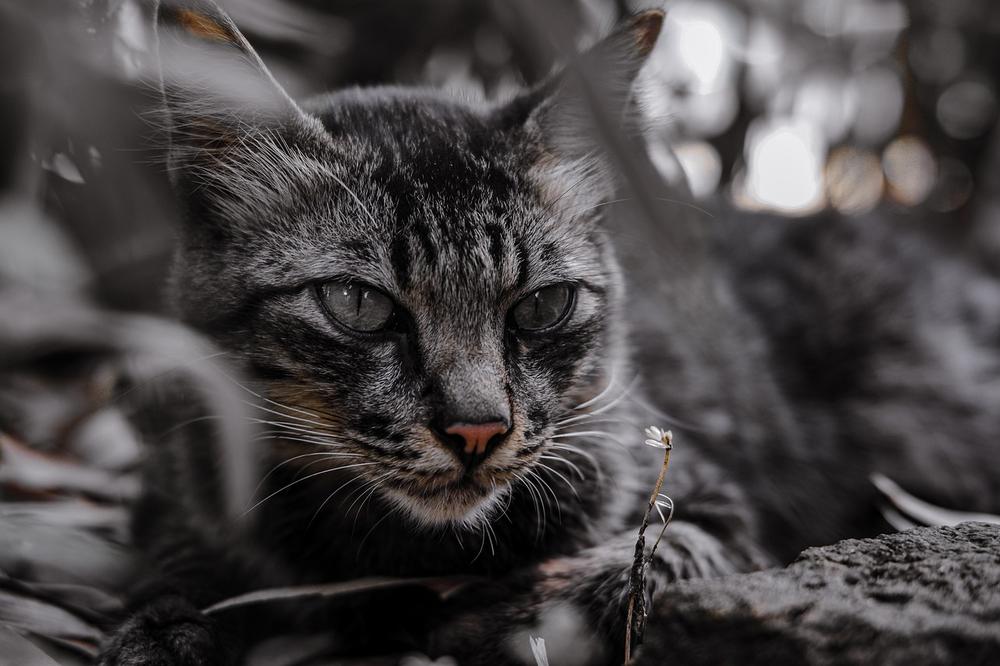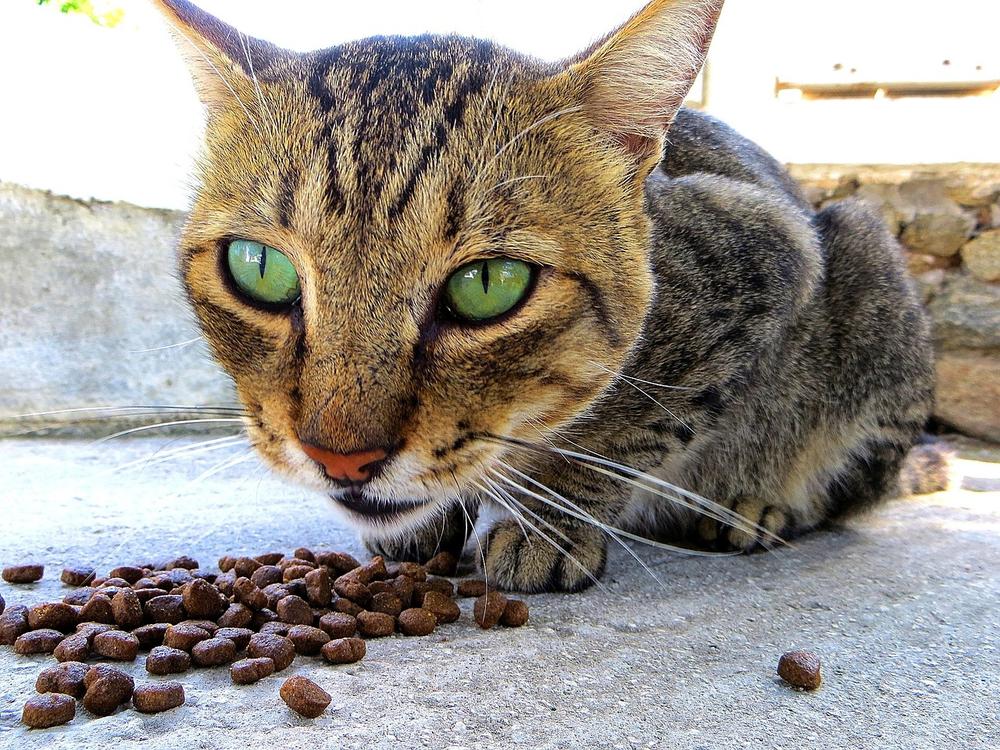Can Dry Cat Food Go Bad?

Let's be honest:
You worry about your feline friend's well-being, right?
Well, imagine their dry cat food turning into a toxic monster that threatens their health. 😱
It's like feeding them poison, and you can't let that happen.
In this I Care for Cats guide, I'll reveal the truth.
Get ready!
Let's find out if dry cat food can go bad and put an end to your worries right now.
Does Dry Cat Food Have an Expiration Date?
Dry cat food typically expires around 6 months after production. You ought to store it in a cool, dry place away from sunlight to prevent mold and bacterial growth. While some products may not have an expiration date, it's best to discard any food that smells off or shows signs of spoilage.
Dry cat food does indeed have an expiration date, and it's usually about 6 months after it's been produced. So keep that in mind when you're out shopping for your precious feline.
Let me drop a little knowledge on you about storing dry cat food.
You need to keep it in a cool, dry, dark place where the sunlight can't reach it.
This way, you'll prevent those preservatives from breaking down and halt any mold or bacteria from making themselves comfortable after the expiration date hits.
But here's something you should know.
Not all cat food products come with an expiration date.
Some of them are less prone to getting swarmed by germs, so they can go without one.
However, if you're unsure whether your cat food has expired or not, I advise you to play it safe.
Just toss it out and grab some fresh grub for your furry friend.
Now, get ready for a fun fact that might surprise you. Once you open that bag of dry cat food, guess what happens?
Oxidation jumps into action, my friend.
Within a mere 48 hours of exposure to the air, that food starts to oxidize.
But guess what?
If you seal it up real tight, it can hang in there for up to 14 days before the oxygen starts doing its thing.

Now, let's talk quality. High-quality cat food, especially if it doesn't contain preservatives, might have protein and oil that can go bad.
And that ain't no good news, my friend.
So, when inspecting your dry cat food for signs of spoilage, put your sniffer to work.
If it smells funky, has pesky molds or insects crawling around (ugh, gross!), or if your kitty ain't interested in nibbling at it like usual, it's time to bid farewell to that batch.
During that whole manufacturing process, ingredients are mixed, cooked, dried, and flavored to get your cat all riled up about their food.
No worries though - they also throw in some preservatives and antioxidants to keep everything fresh and nutritious.
Oh, and one more thing - be sure to follow the feeding guidelines provided on the cat food package.
They're there to help you figure out the perfect portion for your cat, so you can avoid any unnecessary weight gain or loss.
Now it's time for you to give that dry cat food a whirl.
Just be sure to store it properly, use your sharp sniffer to detect spoilage, and stick to those feeding guidelines.
Your cat will adore you for it.
And if you're curious about whether it's safe for cats to indulge in some Oreos, I've got just the guide for you.
In my blog post, you can find out if cats can eat Oreos and the potential risks involved.
So, head over to Can Cats Eat Oreos and satisfy your curiosity.
It's important to know what's safe for our furry friends!
Can I Still Feed My Cat Expired Dry Cat Food?
Signs that dry cat food is no longer good for your cat
Alright, let's have a chat about your kitty and their food!
So you might be wondering if it's safe to feed your feline friend dry cat food that has expired.
Well, the quick answer is NO.
Before giving your furry pal any of that dry cat grub, keep an eye out for a few telltale signs that scream "Don't you dare serve this to your cat":
- Stinky smell: If the kibble smells funky, like something you absolutely wouldn't put in your mouth, then trust your instincts and toss it.
- Soft or damp texture: Dry cat food should be dry, obviously. So, if it feels mushy or oddly wet, get rid of it without hesitation.
- Mold or dust present: I don't think this one needs much explanation. If you spot anything resembling mold or see a cloud of dust on those crunchy bits, you certainly don't want your cat munching on them.
The risks of feeding expired dry cat food
Okay, so what's the big deal with serving your kitty expired chow?
Well, my friends, here's the lowdown:
- Lack of nutrients: Over time, the nutritional value of cat food goes down, meaning your cat won't be getting all the vitamins and minerals they need for tip-top health.
- Health hazards: Feeding your cat spoiled food can lead to upset tummies, vomiting, diarrhea, and even more serious health problems. Dealing with that mess? No thanks!
Cat signals and staying vigilant after feeding expired food
Now, let me tell you another thing:
While cats rely on their sense of smell to figure out if food is safe to eat, they are NOT infallible.

Yep, even though they've got supersniffers, it doesn't mean they can spot every potential danger lurking in expired food.
So, you should keep an eye out for any unusual behavior, changes in appetite, or tummy troubles your cat might experience after gobbling up some expired dry cat food.
If you notice anything out of the ordinary, it's best to consult with your vet.
Taking care of your cat's health is my top priority.
Now you may be thinking, Well, if expired dry cat food is a big no-no for my furry friend, what happens to all the extra stock at stores?
Well, let me share a surprising secret with you...
Retailers often donate...
Is It Safe to Buy Expired Dry Cat Food on Sale?
Don't overlook expired dry cat food at retailers.
Despite being past its date, it can still be safe for your furry friend's consumption.
Shelters benefit from this generosity as many retailers donate these discounted products.
So if you stumble upon them in stores, rest assured that these cat food bags are still suitable to nourish your purring companion.
You don't need to fret about any potential harm.
Plus, this helps provide for shelter cats in need of a meal.
Keep an eye out for these hidden treasures and give your feline a treat without breaking the bank!
How to Store Dry Cat Food Properly
To keep your cat's dry food fresh, here are 12 important things you need to do:
- Find a cool, dry spot away from the sun to store the food.
- Make sure to use resealable bags or zip seals after opening so it stays fresh and doesn't go bad.
- Keep the food in an area where your cat can't reach it, avoiding any spills or exposure to outside elements.
- If you want to slow down the process of the food going bad, think about putting it in airtight containers or even freezing some of it.
- Every day, replace the kibble in the feeding bowl to make sure it's always fresh for your furry friend.
- After 14 days, throw away any open bags to maintain that perfect freshness level.
- When using different containers to store the food, seal them properly to preserve all the nutrition and taste.
- For the best results, it's recommended to keep the dry cat food in the original packaging to lock in maximum freshness and flavor.
- Before buying a bag, check if there are any tears or damage to ensure it's properly sealed.
- Try not to expose the food to high temperatures since it can lead to issues like fatty acid oxidation and bacteria getting in.
- Clean any bowls, containers, or toys that come into contact with the food to avoid any potential health problems.
- Once your cat is done eating, store any remaining food in a tightly sealed container to prevent bacterial contamination.
By adhering to these easy instructions, you can ensure your feline companion's food remains both fresh and packed with essential nutrients. 👍

And now, let me delve deeper into the intricacies of dry cat food and its expiration date...
Does Dry Cat Food Lose Nutritional Value Over Time?
Wondering if dry cat food can expire and become unsafe for your furry friend to consume?
Let's get straight to the point.
Dry cat food is a combination of carbohydrates, fats, oils, preservatives, additives, minerals, added vitamins, and amino acids. It's like a delicious symphony of flavors for your kitty.
Unlike wet cat food, which is full of moisture, dry cat food usually contains only 10-12% moisture.
That means it's dry, just as the name implies.
You know how kibble looks, right?
Now, here's the important part:
Dry cat food does lose some of its nutritional value after reaching its expiration date.
But before you panic, let me assure you that it's not a poison pill for your feline friend.
However, if you have an older cat or want to prevent dehydration, adding water to their dry cat food can be a smart move.
Just make things a bit soggy, you know?
And why not warm it up too?
Warm food always feels cozier, doesn't it?
Now, let's talk about serving size.
Several factors come into play when figuring out how much dry cat food your furball should munch on:
Age, weight, size, health condition, metabolic rate, and exercise levels.
Leaving dry cat food out for long periods won't make your cat sick, but it can go stale and lose its nutritional impact. So, if you want your fluffball to get the best bang for their bite, keep an eye on those crispy little kibbles.
Lastly, bear in mind that dry cat food doesn't go bad like traditional food, but it starts losing its nutritional charm after being opened for 14 days.
The Advantages of Dry Cat Food

Dry cat food has its benefits for your furry friend:
- It's practical and easy to store, unlike those pesky cans.
- You can easily measure portions, making sure your cat gets just the right amount of grub.
- It's got more carbs than wet food, which means more energy for your kitty.
- The crunchiness helps keep tartar at bay, keeping your cat's teeth in good shape.
- Your cat gets all the essential vitamins and minerals they need in one balanced meal.
- It gives your cat the boost of energy they need to tackle their daily adventures.
But hold on, there are a few downsides too:
- Dry food can lead to dehydration if your cat isn't slurping up enough water. Keep that H2O flowing!
- The extra carbs might up the risk of diabetes. Talk to your vet about your cat's dietary needs.
- Some cats may have trouble digesting dry food. Watch out for any tummy troubles and consult your vet if needed.
- Portion control matters to prevent your cat from becoming obese. Be mindful of how much you feed them based on their weight and activity level.
By considering these factors, you can make informed decisions about incorporating dry cat food into your cat's diet and keep them healthy and happy.
Wrap-up
Key Takeaways:
- Dry cat food should be stored in a cool, dry, dark place and has an expiration date of around 6 months after production.
- Preservatives degrade after the expiry date, increasing the risk of mold and bacteria growth.
- Kibble becomes oxidized within 48 hours when left out in the open compared to up to 14 days when stored in a sealed bag.
- Dry cat food contains protein and oil that can go rancid, especially high-quality cat foods without preservatives.
- Check for a rancid smell, mold, or insects to detect spoilage in dry cat food.
- Feeding expired dry cat food can cause nutrient deficiencies and pose a danger to your cat's long-term health.
- Expired dry cat food donated to shelters is safe for consumption.
- Properly storing dry cat food is crucial for preventing spoilage and maintaining freshness.
- Original packaging is designed to protect the dry cat food from air and moisture.
- Dry cat food loses its nutritional value and quality after it reaches its expiration date.
- Dry cat food is more affordable and easier to store than canned food.
- A combination of dry and canned food is recommended for optimal nutrition.
And that wraps up today's article.
You made it to the end of my blog post! I hope you enjoyed reading it as much as I loved crafting this comprehensive and helpful content for you. It does require a significant amount of time and effort, but I genuinely enjoy doing it. If you could take a moment to click on any of the social sharing icons and share this blog post with others, I would be SO grateful! Thanks for your support!
Talk soon,
-Sarah Davis